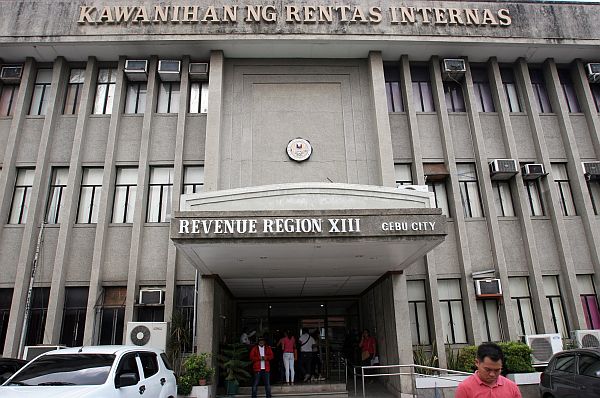
Bureau of Internal Revenue – Cebu City.
CDN FILE PHOTO
The Bureau of Internal Revenue in Cebu City (BIR 13) is now identifying the top 500 “medium” taxpayers under its jurisdiction in a bid to boost its tax collection.
Lawyer Aynie Mandajoyan-Dizon, BIR 13 regional director, said they will soon create a Medium Taxpayers Division to follow in the success of the Large Taxpayers Division (LTD).
“Concentrating on these businesses will hopefully lead to more collection,” she said in an interview on Wednesday.
Tax collection in the region between January and September this year increased by 13 percent to P20.3 billion from P18 billion collected during the same period in 2016.
However, the figure was 6.9 percent or P1.5 billion short of the region’s P21.8-billion target for the January-to-September period this year.
“That’s because last year, there was the sale of a feed mill from which we collected P470 million. It was a one-time transaction. If we had the same collection this year, our deficit would have been smaller,” Mandajoyan-Dizon said.
For the third quarter of 2017 alone, the agency’s tax take dropped by three percent to P6.7 billion from P6.92 billion collected during the same period in 2016.
Around 65 percent of the BIR’s collection for the covered period came from income tax, followed by value-added tax at 26 percent, capital gains from the sale of properties at six percent, and percentage tax at four percent.
The Cebu City-based BIR 13 collects tax through five district offices located in Cebu City north, Cebu City south, Mandaue City, Talisay City and Bohol.
Despite the shortfall against their target, Mandajoyan-Dizon said she is still optimistic they will be able to hit their P29.3-billion goal for 2017, with around P9 billion still due for collection within the fourth quarter of the year.
While they don’t expect big one-time transactions to happen within the rest of the year, she said they have many delinquent accounts to collect from, which she said will help them meet their annual revenue target.
She said the latest initiative seen to boost their collection covers all BIR offices in the country as part of the Duterte administration’s Tax Reform for Acceleration and Inclusion (TRAIN) program.
Categories
A business can be considered a large taxpayer if it is, among others, a corporation with an authorized capitalization of at least P300 million; multi-national enterprises with an authorized capitalization or assigned capital of at least P300 million; publicly listed corporation; and universal, commercial or foreign bank.
The BIR created the LTD to closely monitor the country’s biggest taxpayers, an initiative which the tax collection agency wants to replicate for medium taxpayers.
Mandajoyan-Dizon described medium taxpayers as those who have payments totaling more than 30 percent of a revenue region’s annual collection target.
These were candidates for inclusion in the LTD, but did not make the cut, she explained.
“We saw that the segmentation for large taxpayers was effective so top management thought of doing the same for the next group, which is medium, rather than just lumping them together with regular taxpayers,” she said.
In Revenue Region 13, the top medium taxpayers identified so far come from the construction, manufacturing, wholesale and real estate sectors.
BIR 13 is set to hold a forum on taxpayer segmentation on December 5 at the SM City Cebu Trade Hall, with the top 500 medium taxpayers expected to attend.
7-point program
Mandajoyan-Dizon earlier said that they were going to implement a seven-point program aimed at making up for the collection deficit incurred in the first half of 2017 against the agency’s targets for the period covered.
The first priority in the agency’s 7-point agenda is massive tax compliance verification drive, which involves door-to-door spot checking of establishments to determine which are not yet registered taxpayers.
Other items in the program include intensified data matching, benchmarking per industry, Point-of-Sale machine post-evaluation, inventory stocktaking, enforcement activities, and surveillance.
Dizon said all BIR regional offices are adopting a 7-point program, but are doing it differently, based on the collection potential within their respective jurisdictions.